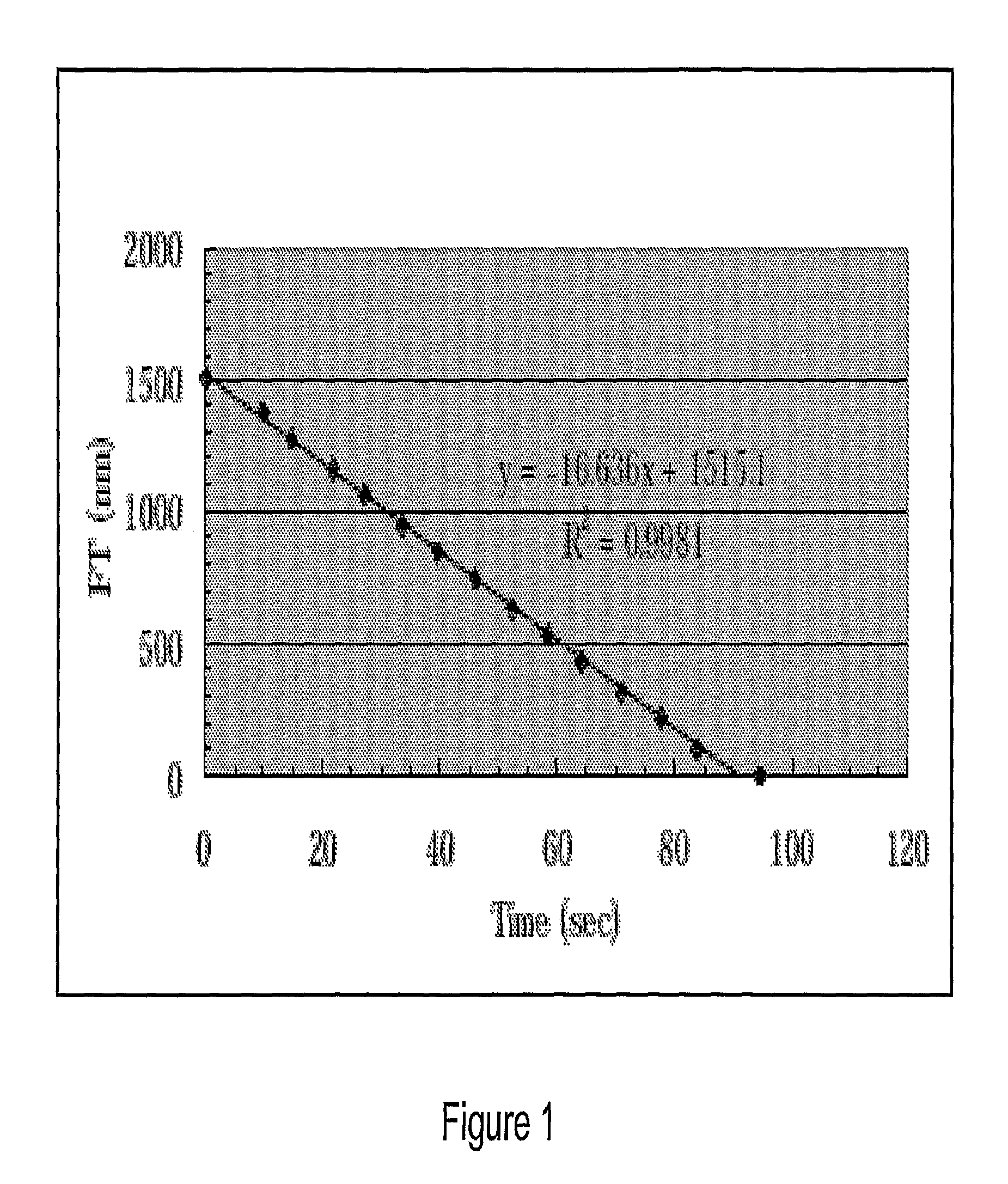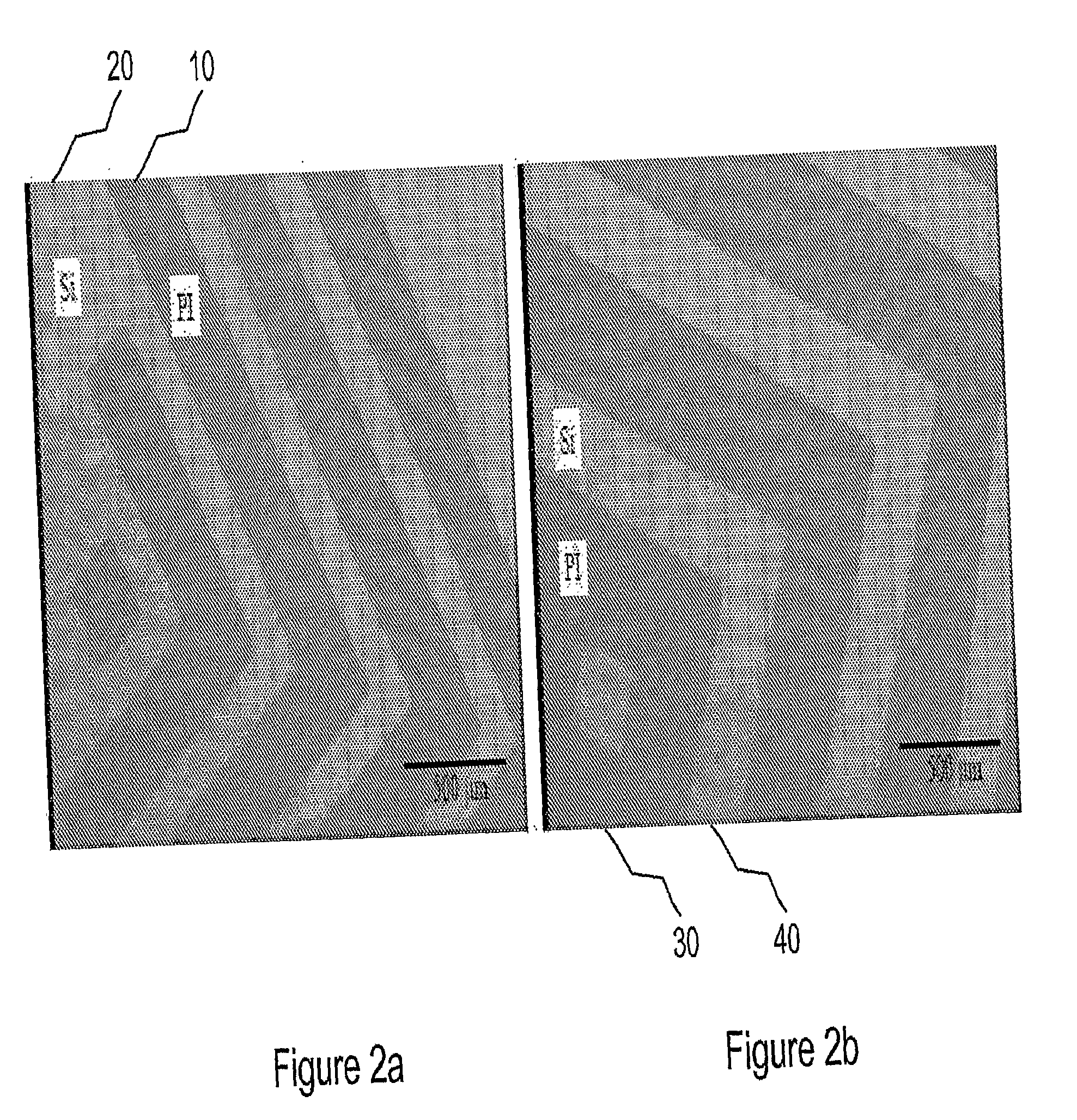Photosensitive Polyimides and Methods of Making the Same
a polyimide and polymer technology, applied in the field of photosensitive compositions, can solve the problems of discoloration of pi or pbo films or other materials used in combination, warpage of integrated circuits,
- Summary
- Abstract
- Description
- Claims
- Application Information
AI Technical Summary
Benefits of technology
Problems solved by technology
Method used
Image
Examples
example 1
[0042]The following HFA-ODA starter compound was provided:
In a three-neck flask having a volume of 300 milliliters (mL), 1.50 grams (g) of the HFA-ODA starter compound, 1.25 g of 2,2-bis(3,4-dicarboxyphenyl)hexafluoropropanoic acid dianhydride (6FDA), and 11 mL of NMP were mixed for a period of 5 hours at room temperature in a N2 atmosphere. The reaction liquid was combined with methanol and water, thereby precipitating a polymer. The polymer as precipitated was collected by filtration and then subjected to vacuum drying at a temperature of 50° C. The yield of the reaction was 98% by weight of the starter compound (2.70 g). Then the polymer was dissolved in NMP solvent such that its concentration in the solvent was 0.5 g / dL (deciliter). The intrinsic viscosity of the polymer solution at 25° C. as measured by an Ostwald viscometer was 0.13 dL / g. The results of nuclear magnetic resonance (NMR) and infrared (IR) spectroscopy indicated that a PI precursor polymer comprising the followin...
example 2
[0043]In a three-neck flask having a volume of 300 mL, 5.00 g of the HFA-ODA starter compound, 4.17 g of 6FDA, and 37 mL of NMP were mixed for a period of 5 hours at room temperature in a N2 atmosphere. The reaction liquid was then mixed for a period of 16 hours at 200° C. in a N2 atmosphere. Sometime during this period, the PI precursor polymer formed in the reaction liquid was converted to the final PI polymer. Thereafter, the resulting reaction liquid was combined it with methanol and water, thereby precipitating a polymer. The polymer as precipitated was collected by filtration and then subjected to vacuum drying at a temperature of 50° C. The yield of the reaction was 99% by weight of the starter compound (8.76 g). Then the polymer was dissolved in NMP solvent such that its concentration in the solvent was 0.5 g / dL. The intrinsic viscosity of the polymer solution at 25° C. as measured by an Ostwald viscometer was 0.19 dL / g. The results of NMR and IR spectroscopy indicated that ...
example 3
[0044]In a three-neck flask having a volume of 300 mL, 1.00 g of the PI precursor polymer obtained in Example 1, 0.21 g of acetic anhydride, 0.18 g of pyridine, and 5 mL of DMF were mixed for a period of 16 hours at 100° C. in a N2 atmosphere. The reaction liquid was then combined with methanol and water, thereby precipitating a polymer. The polymer as precipitated was collected by filtration and then subjected to vacuum drying at a temperature of 50° C. The yield of the reaction was 89% by weight of the PI precursor polymer (0.86 g). Then the polymer was dissolved in NMP solvent such that its concentration in the solvent was 0.5 g / dL. The intrinsic viscosity of the polymer solution at 25° C. as measured by an Ostwald viscometer was 0.14 dL / g. The results of NMR and IR spectroscopy indicated that a PI polymer having the same structure as that formed in Example 2 had been created.
PUM
| Property | Measurement | Unit |
|---|---|---|
| temperature | aaaaa | aaaaa |
| temperature | aaaaa | aaaaa |
| dielectric constant | aaaaa | aaaaa |
Abstract
Description
Claims
Application Information
 Login to View More
Login to View More - R&D
- Intellectual Property
- Life Sciences
- Materials
- Tech Scout
- Unparalleled Data Quality
- Higher Quality Content
- 60% Fewer Hallucinations
Browse by: Latest US Patents, China's latest patents, Technical Efficacy Thesaurus, Application Domain, Technology Topic, Popular Technical Reports.
© 2025 PatSnap. All rights reserved.Legal|Privacy policy|Modern Slavery Act Transparency Statement|Sitemap|About US| Contact US: help@patsnap.com



